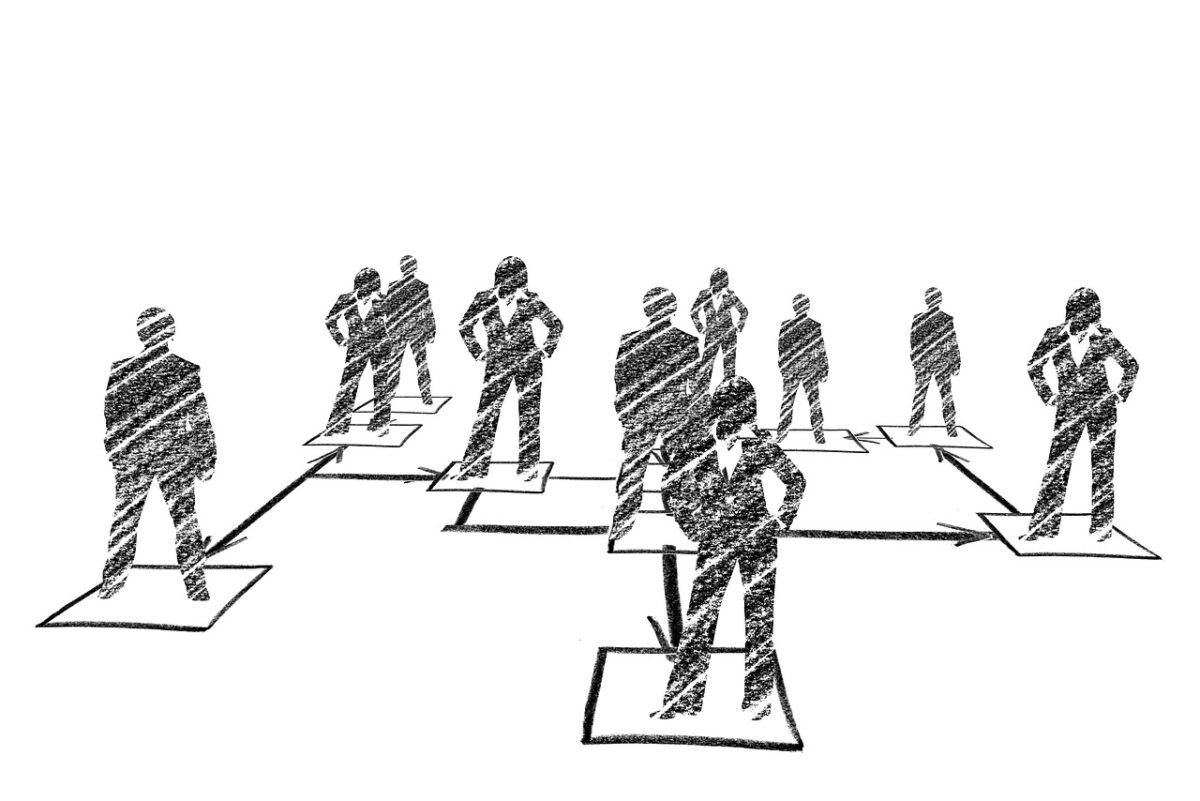10 Undeniable Reasons People Hate Job Descriptions

Job descriptions are an essential tool for attracting and hiring suitable candidates, but they can also be a source of frustration and resentment for both companies and job seekers. From lack of transparency and unclear job duties to excessive requirements and bias, there are many reasons why people may dislike job descriptions.
In this article, we will explore ten undeniable reasons why people hate job descriptions and discuss ways companies can improve their job descriptions to attract more qualified and motivated candidates. By recognising, understanding, and addressing these common issues, organisations can improve their job description effectiveness and create a more positive and productive hiring process.
Why People Hate Job Descriptions
Here are ten reasons why employers or employees may dislike job descriptions.
1. LACK OF TRANSPARENCY
Job descriptions that are vague or non-specific can be frustrating for candidates, as they may not have a clear understanding of the role and expectations. When you consider how to write a job description, it is vital to be clear and transparent to not put candidates off and cause them to lose interest in the position.
How to avoid this issue: A top priority for recruiters is to clearly and concisely outline the specific duties and responsibilities of the vacancy or existing job, including elements such as required qualifications, certifications, and experience. This will help job seekers understand the position’s expectations better and select or deselect themselves as a good match for the role. We recommend reading what to include in a job description to ascertain crucial inclusions for any job description or advert.
Providing information about the company culture and values can help prospective applicants further understand whether they would be right for your organisation. Be clear and upfront about the job role and the company to attract more appropriate candidates and reduce the doubts created by a vague or broad job description.
2. UNCLEAR JOB DUTIES
Unclear job duties can be a real problem for any candidate considering an employment proposal. The potential star employer may never apply for your job if they are unsure what tasks they must complete daily, or come to incorrect conclusions due to ambiguity in your statements.
To overcome the issue of unclarity, be precise, considering the action, purpose, and intended goal of each job duty. It can help to speak to the person the position reports to, and team members in the same or similar roles, to gain insights and a more in-depth understanding.
Recruitment tip: To ensure you include a comprehensive job specification, you can personalise a job description template from our job description library. We have more than 800 job description examples, from credit controller job descrition to business consultant job description, including duties, educations, skills and experience.

3. STALE AND OUTDATED
If a job description has not been updated for a while, it may not accurately reflect the current needs, expectations, and skills required by the business or the role. This can lead to a poor candidate experience if they apply for a job only to discover that the duties or requirements have changed since the job description or advert were first written.
Avoid this issue by reviewing and updating job descriptions often, ensuring they accurately reflect the current company and job needs. This may involve adding or removing duties and responsibilities, as well as the required qualifications and work experience. By keeping job descriptions up to date, your business can ensure it catches the eye of the best candidates who are a good fit for the organisation’s business strategy.
4. EXCESSIVE REQUIREMENTS
Job descriptions that list an excessive number of requirements or qualifications can be off-putting to potential applicants. They may perceive the company as being unrealistic or expecting too much from its workers. It can lead to some candidates concluding they do not have a chance of being hired or finding career success.
You should be realistic and reasonable when penning a job descriptions, outlining the necessary qualifications and experience for the job without going overboard. This might mean prioritising the most crucial must-have requirements and being flexible on less critical ones. By being aware, reasonable, and realistic in job descriptions, you can appeal to job hunters who are more likely to be successful in the job role.
Furthermore, being upfront about your expectations can help prevent other staff members becoming disgruntled, who may feel overwhelmed or under-qualified if asked to perform tasks not within their skill set.
5. BIAS AND DISCRIMINATION
Job descriptions that use discriminatory language can exclude qualified candidates and contribute to an unbalanced culture. For example, using gender-specific language or avoidng unnecessary qualifications, such as being a certain age or having a specific appearance, can exclude perfectly adequate job seekers.
To avoid bias, you should be conscious of the language you use in job descriptions and ensure that they are inclusive and non-discriminatory. Use gender-neutral language and avoid unnecessary requirements that do not directly relate to the job duties and responsibilities.
By taking the right approach, your business can attract a diverse pool of qualified and engaged candidates and create a welcoming and inclusive culture. Additionally, being mindful of bias and discrimination in job descriptions can help to prevent legal issues and foster a positive company and employment brand reputation.

6. MISLEADING OR INACCURATE
If a job description does not accurately reflect the reality of the role or the company culture, it can lead to disappointment and resentment among staff. For example, if a job description portrays the role as one thing, but in reality, it is pretty different, employees may feel misled and used. Similarly, employees may feel out of place or unhappy in their roles if what they read does not accurately reflect what happens in their daily work lives.
You should be honest and transparent in your job description, accurately outlining the tasks and responsibilities of the job and the company culture and values. This will help to ensure that workers have a realistic understanding of the expectations of the role and your company. More often, they will be satisfied and successful in their position, which is good for you and the employee.
7. OVERLY FORMAL OR JARGON HEAVY
Job descriptions that use overly formal language or rely on industry jargon may deter candidates as they are hard to understand. This is especially true for candidates who are unfamiliar with the business sector or may not have a strong understanding of technical terms. You could miss out on valuable transferable skills and different perspectives, which encourage innovation, problem-solving, and creativity
We recommend that your business uses clear and concise language in your job descriptions. Remove industry jargon and overly formal language whenever you can. This will help to ensure that the job description is accessible and understandable to a wide range of candidates, regardless of their level of familiarity with the business sector or industry. At the end of the day, you will appeal to a more diverse pool of qualified and driven candidates and improve the overall effectiveness of your job description or advert.

8. INFLEXIBILITY
If a job description does not permit for flexibility or room for growth, it may not appeal to job hunters looking for a dynamic and evolving role. This can be especially true for those seeking professional development and career advancement opportunities.
It helps to include information about potential opportunities for growth and development when writing job descriptions. This may mean outlining opportunities for training and possible career paths for advancement within the team, company, or group. By highlighting opportunities you will appeal to more appropriate job seekers looking to bring more to your team.
Also, offering development opportunities can help retain talented and motivated employees (your most valuable assets), who may be more likely to stay with the company if they feel they have options for progression.
9. LACK OF CULTURAL FIT
Suppose a job description does not accurately convey the company culture or values. In that case, it may be difficult for individuals to determine if they would be a nice fit for your organisation. Mismatches between the company and employee, can create disappointment and send staff turnover on an upward trajectory.
You can avoid this issue by including more information (or a link to the careers hub on the company website) about the company culture and values in your job description/advert. This may mean outlining the company’s mission, vision, core values, and any specific cultural characteristics or expectations. By doing this, you will increase the likelihood of having a successful and long-term employment relationship.
10. POORLY WRITTEN
A poorly written job description can be confusing and off-putting to potential candidates and shows them that you do not possess effective communication. That could mean a weaker pool of candidates and increase the time and resources required to fill an open job.
You should carefully review and proofread any job description before publication to ensure it is clear, concise, and free of errors. You could seek feedback from colleagues or use editing tools, such as ChatGPT or Grammarly, to improve the overall quality of the job description.
Take the time to ensure that the job description is well-written and free of errors to attract better fitting applicants and improve the overall job description effectiveness. Additionally, a well-written job description can reflect positively on the company and its attention to detail, helping to improve the company’s recruitment strategy, reputation, and employment brand.
Writing Job Descriptions FAQs
Here we answer your questions on writing engaging and useful job descriptions.
Here are a few tips for making a job description engaging:
1. Use clear and concise language: Avoid overly formal language or industry jargon, and aim to make the job description easy to read and understand.
2. Highlight the benefits of the role: In addition to outlining the duties and responsibilities of the position, consider highlighting the benefits of working for the company, such as opportunities for growth and development, a positive company culture, or competitive compensation and benefits.
3. Include information about the company culture and values: Providing information about the company culture and values can help candidates to determine if they would be a good organisational match.
4. Use bullet points or lists: Organising the job description into bullet points or lists can make it easier to read and understand.
5. Use strong action verbs: Using strong action verbs can make the job description more engaging and dynamic and help to convey the expectations of the role.
6. Add a company logo or branding: Including a company logo or other branding elements can make the job description more visually appealing and help to create a more substantial brand presence.
7. Proofread and edit: Ensuring the job description is free of errors and typos can help create a more professional and polished impression.
A job description should typically include information about the job title, duties, and responsibilities of the role. Required skills and qualifications, along with any education or experience requirements, should also be included. Company culture and values, compensation and benefits, the location of the position (including any information about remote work or travel), reporting structure, working hours and schedule, and contact information of the person responsible for the hiring process are all vital inclusions.
Choose an accurate job title that reflects the responsibilities and actions of the job. Required skills and qualifications should be listed, such as a bachelor’s or master’s degree or certification. The company culture and values should help job hunters decide if they will be happy working with your organisation.
Information about compensation and benefits offered for the role should also be included, as well as the location of the position and any information about remote work or travel. The reporting structure, working hours and schedule, and contact information of the person responsible for the recruitment process should also be included in your job description.



